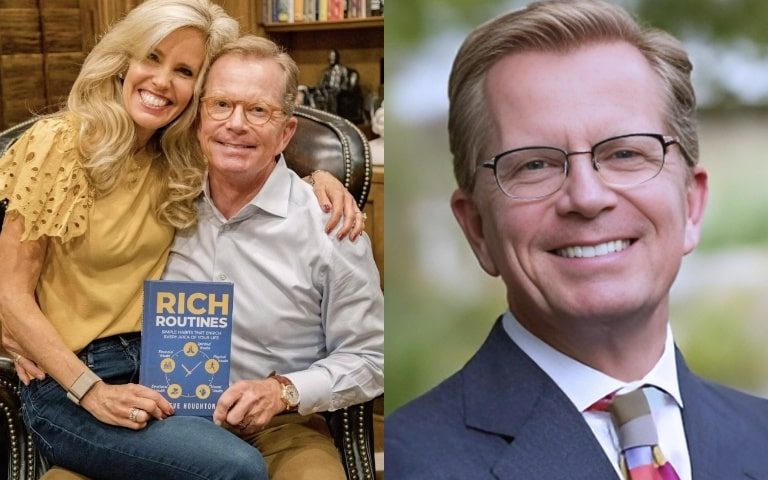
Crispin Glover’s Net Worth: He Turned Down a $125K Fee and Won a $750K Settlement — How Did He Build His Wealth?
July 29, 2025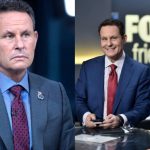
Brian Kilmeade Net Worth: From Sports Reporter to ‘Fox & Friends’ — Aren’t You Curious About His Wealth?
July 29, 2025Steve Houghton, Chairman and CEO of Houghton Capital, didn’t start rich. In fact, he grew up in a house heated by firewood, which he himself gathered. His dad, he says, was so frugal he “threw nickels around like they were manhole covers.”
He learned early on that money wasn’t a given. It had to be earned, saved, protected, and grown.
Steve Houghton’s net worth is now roughly a billion dollars. How did he go from a clueless kid to a self-made business magnate? Let’s break it down.
Steve Houghton Net Worth Overview
On Moneywise with Sam Parr, Steve Houghton claims he’s worth “somewhere in the high nine figures to low ten figures.” That puts him in billionaire territory, or possibly beyond that, depending on oil prices and interest rates.
But you’d never know it from how he lives. He’s still more focused on investing than indulgences. In the early days, Steve tracked every penny. Today, he just knows his expenses run six figures a month but doesn’t bother with the details.
That said, he does spend with purpose. Steve owns a lake house where his family gathers regularly. He also bought a ski home, fulfilling a childhood dream.
Growing up in rural Utah, skiing was off-limits; it was too expensive. Ironically, he only picked it up after moving to Texas. Now, his whole family skis.
Then there’s the helicopter he paid a couple million for, which he learned how to fly. It was a splurge, but it keeps him sharp. And if he avoids one bad deal because he’s up in the air, then the helicopter more than pays for itself.
Tragically, in 2024, Steve was involved in a helicopter crash that killed his friend and ATL Technology CEO Brad Brown and the pilot. Steve survived with injuries.
Early Days: Selling Books
Just out of high school in the early 80s, Steve and his friend Brad hatched a plan to sell books door-to-door in California. Most of their crew quit. Even the manager bailed.
But the pair stuck it out. After a crash course from a real sales rep, they ended the summer as the top two salesmen in the region.
He made around $5,000–6,000 that time (six figures in today’s dollars). The next year, he made $35,000.
Then came a mission trip for his church, college, and more book sales to pay the way through. All of it shaped his work ethic.
Real Estate Apprenticeship and Money Lending
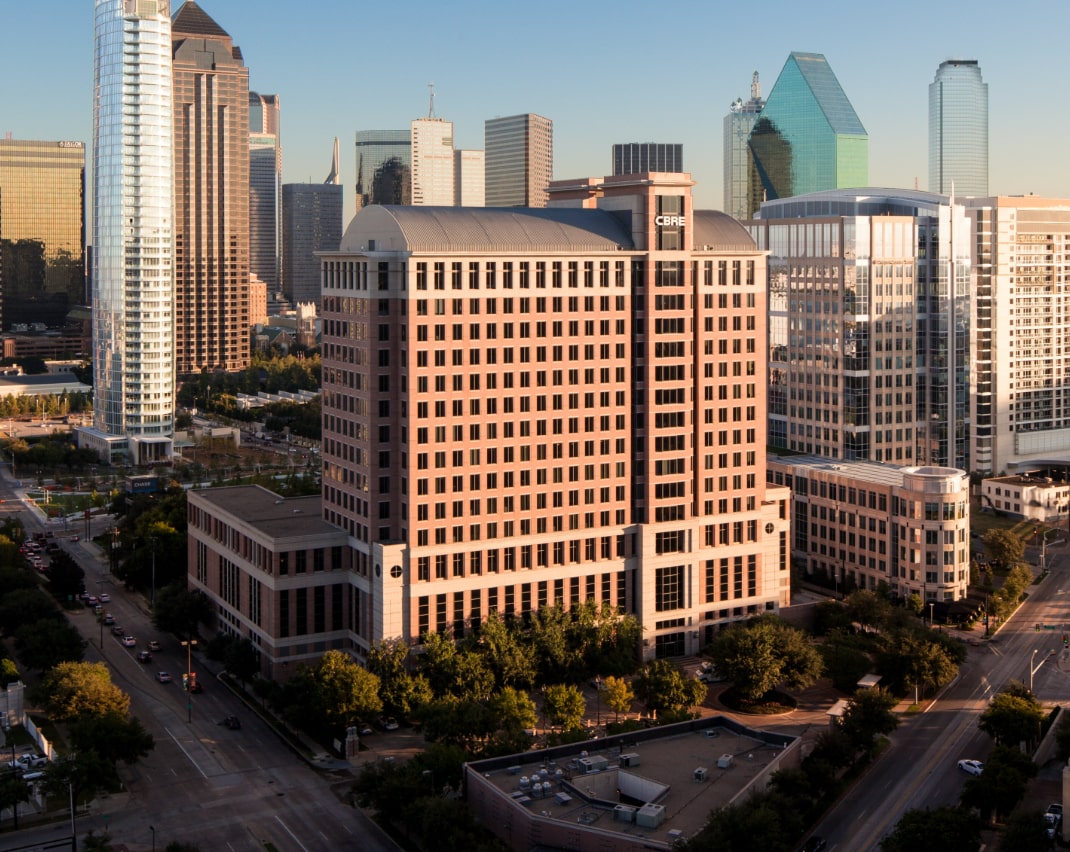
In 1989, Steve Houghton’s entry into Trammell Crow exposed him to the essence of the rise and fall of the large real estate industry, which later became his lifelong strategy: acquiring, holding for the long term, and never taking a single gamble
Image source: Google
In 1989, Steve landed at Trammell Crow, then the largest real estate developer in the U.S. He calls it “a great job, a great company,” but it also exposed him to the boom-bust nature of big-time real estate.
That was his first brush with what would become a lifelong strategy: acquiring, holding them long-term, and never betting the farm all at once.
Using $70,000 in credit card debt and $20,000 in savings, Steve made his first loan: $64,000. He was so stressed that he was drinking Maalox, but the deal returned capital in two months. That was the beginning of a private lending operation that continues today.
Self-Storage, Oil & Gas, and Recycling Capital
By age 30, Steve had around $3 million to his name. At 40, it was $30 million. By 50, $300 million.
His entire investment philosophy revolves around capital recycling. The playbook is simple: buy high-quality assets, never overpay, extract capital through cash flow or refinancing, and reinvest it elsewhere. Then repeat.
Early on, most of that capital went into building self-storage facilities. That original $1–2 million investment ballooned into hundreds of millions in assets.
Later, he branched into oil and gas, but not the risky kind. He buys mineral rights (subsurface land) and leases them to companies like Exxon, which do the drilling and development. Steve gets 25% of whatever comes out of the ground.
His oil and gas investments have zero debt; it’s too volatile an industry to risk borrowing. He just can’t let a single mistake sink the whole company.
And once he buys, he rarely sells. He holds. Forever, if he can. Because why sell a solid, cash-generating asset just to pay taxes and lose the income?
Compound Interest and Marriage
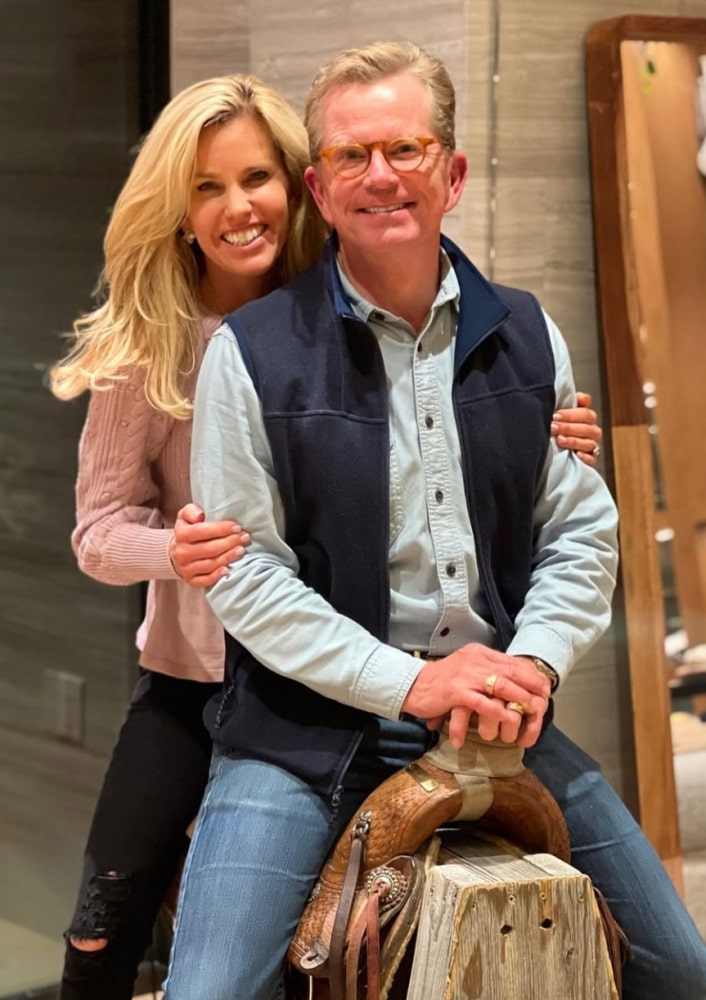
Steve and his wife Jennifer both believe in compound interest in finance and see it as a way of thinking
Image source: Instagram
Steve and his wife Jennifer made a pact early in their marriage: live like church mice for ten years so they could live free forever after.
They bought into the gospel of compounding, not just financially but as a mindset. Every dollar reinvested was a vote for future freedom.
He didn’t grow his wealth by chasing every shiny object. He grew it by focusing, holding, and doubling down when the math worked.
Steve Houghton’s Rich Routines
If you want to get rich the way Steve Houghton did, his book Rich Routines is worth a read. It’s about the simple, consistent habits that helped him build serious wealth and keep his family, health, and values intact.
Steve doesn’t believe in choosing between success and a good life. He thinks you can have both if you get the order right.
You can grab Rich Routines in hardcover, paperback, or audiobook.
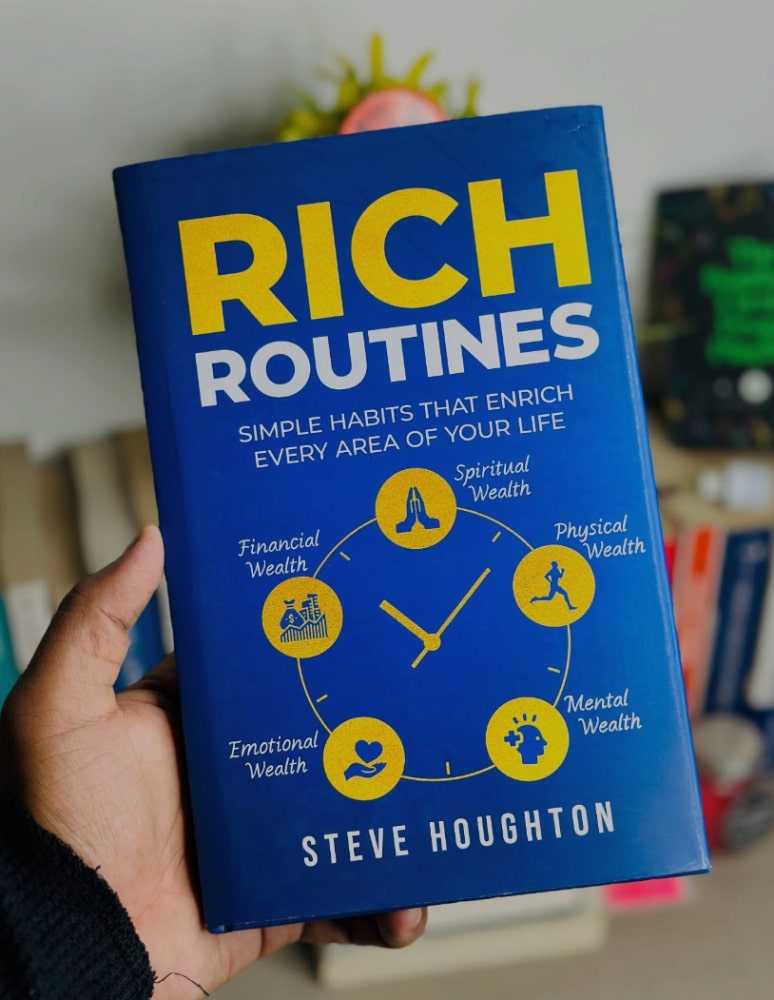
Steve Houghton’s’ Rich Routines’
Image source: Google
Final Thoughts
There’s a Mark Twain quote Steve loves: “All you need in this life is ignorance and confidence, and then success is sure.” He says he had plenty of both.
Ask Steve what money means to him now, and he’ll tell you it doesn’t create happiness, but it does buy time and opportunity.
That mindset hasn’t changed, even as Steve’s net worth could be well over a billion dollars.
Featured image source: Google

